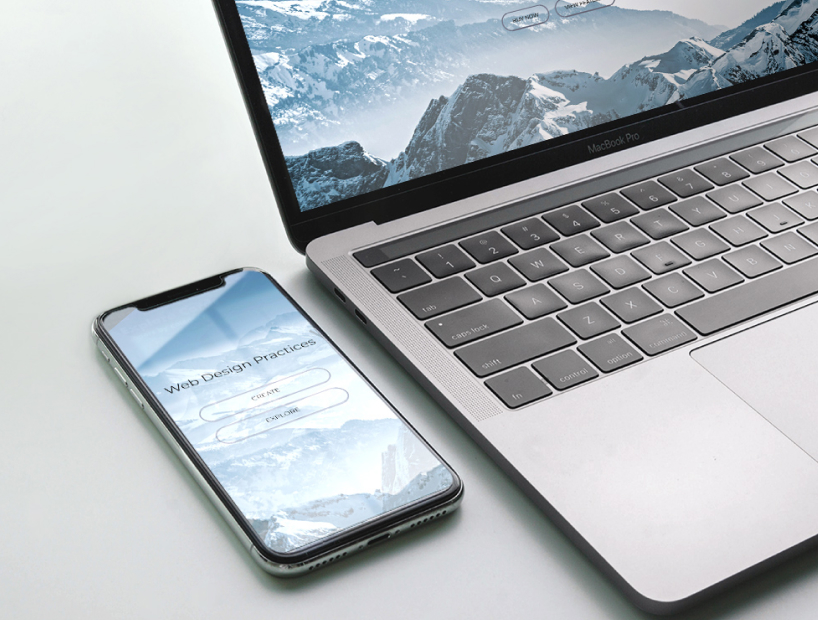With new devices popping up each year, screen sizes can vary wildly. From large PC monitors to palm-sized smartphones, your website must be responsive and flexible no matter the device your target audience uses.
A study by Oberlo predicts that there will be about 3.5 billion smartphone users in the world by 2021. More and more people are surfing the internet on their phones because they are more convenient and comfortable than desktops or laptops. Hence, you should optimize your websites for the smaller screen.

Failing to do so can turn potential customers away due to unsatisfactory user experience on your website. After all, who would bother exploring and learning more about a company if their website lags and crashes all the time? Anyone would hightail out of there in the blink of an eye.
To help you maintain positive user experience, here are some responsive web design techniques you should note.
1. First think small before you think big
Every project starts with thinking through its smaller parts. It is the same with creating a website. It is best to consider how it will look on mobile devices before moving on to its desktop version.
There are many reasons why you should think about using this approach. The first is that it is always easier to scale up the mobile version than scale down the desktop version. Using a mobile-first approach means you can immediately eliminate possible issues that mobile websites usually have. Likewise, this process can help you identify the necessary visuals and functions your website should have across all devices.
Website builders can assist you with your website creation process. Using a website builder can help you test what’s really necessary for your website to achieve your user experience goals across all devices. All of the Boxmode templates are fully mobile-responsive and customizable, so if you are not completely satisfied with the results, you can make changes in a blink of an eye.

2. Optimize layout structure
The biggest challenge when creating a website for mobile devices is the small screen size. You get less space to work with content and imagery.
Unlike desktops, where you can display different sections for information, mobile screens can only provide you one page at a time. Thus, you must learn to minimize and prioritize the type of content you want to put in.
Remove unnecessary visuals from your pages to save up space for more content. Instead of putting content side by side, stack them up on top of one another to maintain a vertical layout suitable for mobile viewing.
And most importantly, your layout should be able to adapt to smaller screens to avoid having sections cut off or missing content.
3. Pictures should be flexible, too!
If you want your website to be responsive, you must make sure that the content is flexible. One of the responsive design principles you should always consider is the visuals or photos you will be using for your website.
Depending on the screen size and resolution, photos can turn grainy and pixelated. In most cases, a larger screen like a PC requires higher resolution on images than mobile screens. That said, you have to make sure images have enough resolution to maintain consistent quality across devices.
One way to do so is by using scalable vector graphics (SVGs) instead of JPG or PNG. SVGs are infinitely scalable and can adapt to any screen. SVGs maintain that sharp, clear quality no matter what platform your website is viewed on. Another way is to tailor your images to use the correct image resolution depending on the device where it loads up.
4. Consider font legibility
Let’s face it. Almost nobody has the patience to read blocks of text. Likewise, no one will read a block of unreadable text. If the text font is too small or too cramped on mobile devices, the website visitor will most likely not read it, which means your content will go to waste.
Fortunately, typography can be responsive, too. There is a wide range of options when it comes to font style and size. And while you have every right to get creative with the typeface you want for your brand, you must always consider its legibility.
When designing your websites, you must choose the best fonts for all screen sizes. It’s okay to have a different font style and size between your desktop website and mobile website. Just make sure that these fonts are readable on their respective screens.
5. Watch out for the thumbs
Unlike desktops with their accurate and precise mouse pointers, we use our fingers to click on links and buttons on smartphones and tablets.
When designing a mobile website, you must think of navigation in taps and swipes using the fingers. Hence, you must consider the space needed to accommodate its size and its potential reach across the device’s screen.
To ensure your website remains user-friendly on portable devices, it would be a good idea to enlarge your buttons or give sufficient spaces between links. This way, users can avoid being redirected to a different page than the one they wanted. Likewise, interactive elements should be easy to reach. Avoid placing them at corners where it can be difficult for the device to register the users’ touch.
6. Take advantage of mobile features
User experiences vary when using desktops, tablets, and smartphones. All these devices have their unique features and functions that you can fully utilize for your website.
Smartphones, for one, have direct access to messaging and voice call apps. You can use these features to enhance your mobile website by creating links or buttons that can automatically prompt a call when clicked.

These seamless transitions from one app to another does more than improving user experience. It can also increase conversions and encourage action on the part of your customers. Likewise, it opens up more opportunities for interactions and engagements on both sides.
7. Never forget about performance tracking
Long loading time can drive web visitors away from your website. And you might be losing opportunities because of it.
Whether it’s on a desktop, tablet, or smartphone, your website has to run smoothly to capture your prospects’ attention. According to a study by Deloitte, improving website loading speed can increase your traffic and conversion rates in the long run.
You can do this by eliminating unnecessary graphics, visuals, or interactive elements to avoid overloading your pages. Likewise, use smaller-sized files for photos, videos, or other media to cut back on loading time.
Keeping it flexible
Having a responsive web design is one of the most essential website UX practices that you must observe. As more and more people prefer using their smartphones and other mobile devices for web browsing, your website should be flexible to maintain user experience, despite the difference in screen size.
A website builder like Boxmode can help you create the best web design for your brand. You may prioritize the tips from this article to your preferences. Still, we advise you to keep them in mind to ensure your website is optimized and responsive regardless of your web visitor’s device.

